This post is related to few of my previous works,which has its links to the ideas I'm currently contemplating about.
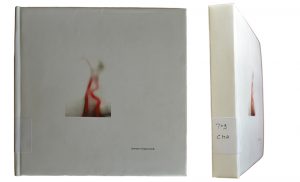
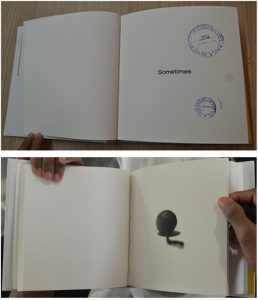
This book was made as part of a site-specific project during my post-graduation from Shiv Nadar University. The site was the university’s library where the book was incorporated, and presently rests on its shelf. There are seven sentences extracted from my diary to ground the book upon. Each sentence is a chapter woven together with images of objects collected through time, drawings and sculptures, photographs of my body, of eye veins, of wall seepages, of seeing and gathering.
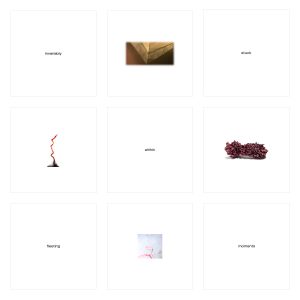
Words have a form just like images, a constructed space beyond their meaning. We tend to read words and absorb their meaning, ignoring them as visuals, and the subtle sense they give when placed next to other words/images. The emphasis here is on what the words and images do and how they behave at the center of the page, what is their relation to the other words/ images, and their relation to the mind perceiving them. A single word/image is placed at the center of each recto, defining a single frame for the eyes to adjust to and to play with the memory. Each word/image becomes isolated at the particular moment of confronting it which accentuates its tangibility, and yet it is related to the other words/images.
I've been working with blank spaces through my Artist's books. Text, visuals and the blank spaces around them work together to create different meanings for each viewer. The blank space here not only means visual blankness but also a blankness in time: silence.
When one flips from one page to another in order to join the fragmented words and images into a single sentence in their memory, the movement of flipping creates another gap, another silence in time which plays with the already fragmented memory of the reader.
In another work I've used the absence of silence to create an experience and again functioning on the same aspect of having different meanings for each viewer.
Where the viewer only catches glimpses of the fast scrolling words and the sense and meaning derived from whatever the viewer has been able to read, is the meaning they take away with the work. here is the link to the work:
Presently, I'm getting interested in how sound operates in the context of meaning generation. How sound fills the void around us and how the silence in contrast with the sound, is equally heavy and has its own meaning in terms of the thoughts which constantly occupy our mind even when we are sitting amidst complete silence. The blank spaces between our thoughts are as filling as the thoughts, and I find they are more important and compelling, while the words are actually fragmenting this silence. I'm prospecting on creating a sound installation or a soundscape where a sentence is spoken but is fragmented through space. A word is spoken from a corner while the next word of the text may be spoken from somewhere else, and the listener will form meaning depending on where s/he is positioned in the space and in which direction s/he is moving, how much time s/he is spending in a given location and the speed with which s/he is moving. All these factors combine to create a meaning for her/him.
Hence, each listener will absorb different fragments of the spoken text which will be very different from someone else moving through a different path within the soundscape. The aspects of time, space and perception are the primary elements leading to this process of creating meanings.



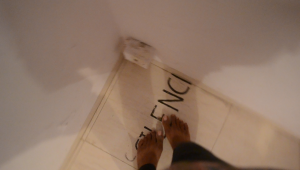
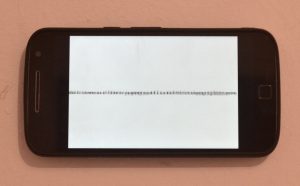
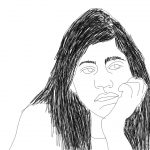
Hi Sonam.
it’s interesting to see how do you see the things ,also after reading your blog i have some inquiries and perception towards your work.
first of all start with your book work, the interesting part is for me that how images and texts were communicate on a single surface.which may sounds very fundamental , in that book their is a certain amount of act of extraction is there .at same time certain amount of translation and kind of manipulation is also there .so my question is when you are dealing with texts , images , photographs , found objects etc for making a single text ( which comes from your personal dairy ) ,how do you metaphor things or translating things,and in a personal level is there any sense of manipulation is there ?
I really like the play of black places in your book.which some how giving me a sense of contradiction with such word’s definition like beginning , starting , ending ,destinations ,completing etc etc .where it is clearly visible that their is no start and their is no end or may be the end can a start which holds a certain amount of profoundness of what emptiness is reflects in your work.
Thanks for your comment Bhargav. It is a tedious editing process. Half driven on instinct and half very carefully taken decisions. At some places the meaning of the words are replaced with images, e.g. the sentence ‘Sometimes am afraid own thoughts, too’ this is the first fragmented sentence in the book and the last word should be ‘loud’ but it is replaced with an image of fungus which looks like an explosion. So the translation at these places happen very consciously where the weight of the meaning of a word is equated with the weight of the image and what meaning it can create within the sentence. Getting to the personal attachment to the materials used, they are also very carefully chosen as I’m very hesitant sharing my personal thoughts with people. And thus the sentences are devised in a way to reveal them only half with the words missing or taken over by images, which makes the reader’s perception and memory completely fragmented and not able to capture the thread of thoughts.
I like your observation made in the last line, which is also what I wanted to achieve, by not using fullstops. The second edition in the series might interest you more as I’ve used the tool of blank spaces more congruently with the text and images, creating a meaning by themselves, and the whole book is woven with a single text which is one of my poems. You can access it here: https://www.academia.edu/32484306/Book_II.pdf
Your point of view on the words in visual way and sound, all connected with memory it’s really similar to my interests. Here is one video I made in 2014 – vimeo.com/239598487, it’s about how we memorized everything through words, stories, and everything it’s just remembering, again and again. With repeating our stories, every day, we are making one multi-layered ‘memory in process’.
Unfortunately, I can not read the words on the photos from your book. Can you write me which words you were using?
I like the palimpsest you’ve created, and since I cannot understand Russian, it makes the words more indecipherable and thus closer to a visual. Its interesting to see how language and script also adds to this process of creating memory and meaning. There is one more work which is about the present moment, which I can relate with your video where the same words are repeating, and the repetition of the visual as well as the meaning of the words creates a deep impact on the perception of the viewer. You can view it here: http://cargocollective.com/sonam/Now-1
The above line reads, “Invariable stuck within fleeting moments”
You can access the complete book here: https://www.academia.edu/32484305/Book_I_.pdf
Invariably*
Barbara Kruger said: “I work with pictures and words because they have the ability to determine who we are and who we aren’t”. Like many artists who have used words, her priority is language and its ideas. However, you are more concerned with decontextualising and displacing words from their place of origin ( such as your diary) and creating newer contexts based on mediated situations. To me, this creates an interesting juxtaposition – Does your use of words then depend solely on an audience to embed it with newer meaning, or do they exist as visuals or even ideas independent of the viewer’s intervention? When you contemplate adding sound to this equation, do you then think of the resultant word/sound as a visual or idea? I would love to know your thoughts on these points not from the point of view of the viewer, but of the word/sound existing independent of intervention. I am reminded of Octavio Paz who said -Words are acts.Which to my mind frees each word from the syntax of a sentence and embeds them with the aberrations of individuality.
My works here, dealing with words, are meant to be interactive and thus the involvement of audience plays a crucial role. I would not necessarily call it intervention, as I don’t see them altering the meaning of the work. The meaning would be altered if their is a fixed meaning conveyed, but in this case there isn’t. Instead, it does aim to embed newer meanings in the perception of the audience resulting from the interactions. In my work with words written with kajal on floor definitely requires the audience’s interaction which in turn molds the meaning of the words with each stage of erasure. While in the above artist’s book there is a certain meaning conveyed through the juxtaposition of the words and images, but simultaneously an intentional gap is left for the reader to project as well as form their own set of meanings from their experience with the book. So there are different intensities of agency with the audience in different works, but they do always have a role to play. Your question makes me reflect on what it would mean to work in a similar way without keeping the audience in mind; I think if I were to device it without the context of the audience then it would become a completely different work with a very specific meaning to covey, which would also be its purpose with or without anyone watching. And this may happen during the process of making, as most decisions and formations occur while working.
The translation of words into sound in the present context gives rise to an idea as well as a physical thing which occupies space; during the encounter the sound will occupy space in the audience’s attention/visual field where, though it is sound, it’ll attract them to the source/ the physical space of the source; and after the encounter, the spoken word will occupy space in their memory, just like a visual. Here, when spoken individually, each word will have a weight of its own accentuated by the weight of its isolated meaning from the whole meaning of the sentence, as you rightly put it in the last line.
I hope I’ve understood your questions correctly, and thus answered them. please correct me if otherwise.
Sonam Hi, thank you for addressing my questions. I have given your concept some thought, especially to the translation of words into sounds that can occupy space. To my mind the idea of sound and form evokes the quasi morpheme/morpheme non-syntactic structure of Mantras. H.R. Zimmer defines mantra as a verbal instrument to produce something in one’s mind. A bija mantra, in fact considered as primary sound of the universe, called shabd in Sanskrit. Shabd is none other than Vac, the first primal sound as human speech. In Hinduism the connectivity between word meaning (varna) and word sound (dhvani), make up sabda, or linguistic sound. The Sphota theory originally developed by grammarians Patanjali and Bhartrhari defined Sphota as “kind of meaning-bearing sound revelation within normal human consciousness” (Beck, Guy L. (1993) Sonic Theology). Sphota is considered to be a unifying principle between word, grammar and the meaning. To Patanjali Sphota signified spoken language, with the audible sound (dhvani) as its special quality. In Vedic philosophy life and creation is cyclical but what is interesting is that the seed from which each cycle of creation arises is “Divine Word” (Daivi Vâk). Also Shabda Brahma or cosmic vibration is considered the fundamental theory of Indian classical music, art and poetry. What is surprising is that Cosmology states that Sound waves that rang out in the early universe sculpted its structure. So it is not wrong to say that sound is the very basis of our existence- how we think, communicate! I have tried to connect quite a few fields out here; hopefully, some of this may possibly help you further your research and add more dimensions to your thought process.
Also wanted to share the following link which has a great many works by contemporary sound artists
http://www.everydaylistening.com/
Your observations are quite interesting and I’ve not thought about it in the context of mantras. After reading your reflection I can relate it also to the recital of ‘Aum’ which is believed to be the first sound, also creating the Universe, as you stated. Ritualistic recitals of shloks and mantras in Hinduism are very much related to the idea of sound occupying space and time. I’ve no prior knowledge in these areas and it is a good direction to take and start researching for my work.
Also, thank you for the above link!
I like your idea of using text as an element in your art and incorporate with images, video, and sound to make multi-media art. The difference experience each listener received and how time, space and perception can lead to creating meanings reminds me Ken Feingold’s new media piece The Animal, Vegetable, Mineralness of Everything (https://youtu.be/HSBLQUWK9ls). This work is a “cinematic sculpture”. The dialog is not pre-recorded and is different each time someone visits it, generated in real time by a computer program. The conversations that these figures carry on are neither completely scripted, nor are they random; rather, the software gives each a “personality”, a vocabulary, associative habits, obsessions, and other quirks of personality which allow them to behave as if in a scene of film, acting out their role over and over, but always changing.
Here I would also like to share you a recent performance piece I collaborated with 2 of my colleagues:
https://youtu.be/8OsPbmHLOI8
Thank you Dengke for introducing me to Ken Feingold’s work. there are certain similarities between our ideas and what we are trying to achieve, mainly the idea of varied experiences and improvisations in what is being conveyed and absorbed through multiple meaning generation, though in a quite different way and through different subject matters at hand. It is very rightly described as Cinematic Sculptures. I also like the idea of making the figures devoid of emotions and how they are invariably affirming their point without being influenced or listening to the other person, and just moving around their fixed set of ideas. And this makes me think of various ways I can approach the idea in my present work.